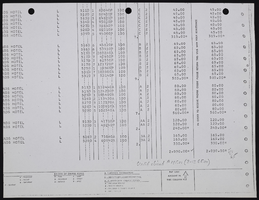Search the Special Collections and Archives Portal
Search Results

Grand Hôtel du Louvre, menu, December 16, 1875
Date
Archival Collection
Description
Text
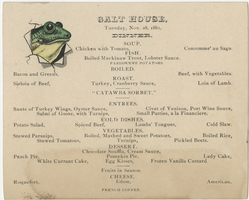
Galt House, menu, Tuesday, November 28, 1882
Date
Archival Collection
Description
Text
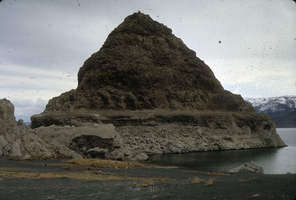
Slide of a tufa deposit in Pyramid Lake, Nevada, circa 1970s
Date
Archival Collection
Description
Image
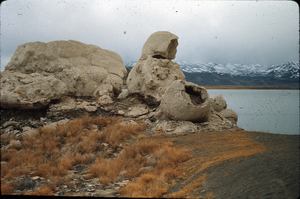
Slide of the rock formation known as The Squaw and Her Basket, Pyramid Lake, Nevada, circa 1970s
Date
Archival Collection
Description
Image
"Las Vegas: Snapshots of History" Photograph Collection
Identifier
Abstract
The "Las Vegas: Snapshots of History" Photograph Collection is comprised of photographic prints and slides as well as digital surrogates of photographic prints and ephemera representing architecture and events in Las Vegas, Nevada from approximately 1960 to 2017. Materials were donated by members of the Las Vegas community as part of a community scanning day sponsored by the National Endowment for the Humanities' Common Heritage grant. The majority of the collection documents landmarks in Las Vegas including the Stardust Resort and Casino, The Mint Las Vegas, Fremont Street, and the Desert Inn.
Archival Collection
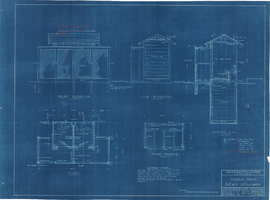
Los Angeles & Salt Lake Railroad Company double privy: architectural drawing
Date
Archival Collection
Description
From Union Pacific Railroad Collection (MS-00397). The scales are noted in the drawing. The bottom of the drawing says, "Material-Finish: All Finish Lumber Unless Otherwise Noted Shall Be [Opsas?] Wood Work Of Vault Shall Be O.P Rough. Exterior Of Privy Including Both Sides Of Door And Door Jamb: Also Wood Lattice Screen On All Sides Shall Be Painted With 3 Coats C.S. Lead & Oil Paint As Directed. Doors Shall Be Hung On 3 1/2" x 3 1/2" Botts. Doors Shall Be Provided With Rim Latch Knob Lock And Iron Barrel Bolt. Revisions: Added Vent Stacks, Seat Cover, Double Floor & Floor Shoe".
The bottom corner of the drawing states, "Union Pacific System L.A. & S.L.R.R. Double Privy 5'x8' With Lattice Screen. Ass't Chief Engineer's Office. Los Angeles, Calif. Drawn By E.C.B. Traced By E.C.B. Checked By F.W.G. Date June 14, 1926. Scale As Noted. Revised May 5. 1927. Drawing No. 15637".
Also written on the drawing: "Two to be built at East Yard, Calif. One ' ' Big Springs, Nev. ' ' Las Vegas, Nev. ' ' Borden, Utah. ' ' Elgin, Nev. 1927. ' ' Dry Lake, Nev. 1927. ' ' Wann ' ' 1928 [crossed out]."
Image
Luceanne "Lucy" Taufa oral history interview
Identifier
Abstract
Oral history interview with Luceanne "Lucy" Taufa conducted by Jerwin Tiu, Cecilia Winchell, and Stefani Evans on December 16, 2022 for Reflections: the Las Vegas Asian American and Pacific Islander Oral History Project. In this interview, Taufa describes growing up on the Tongan island of Vava'u in a large family and later immigrating to the United States. She recalls her father first immigrating to Hawaii, and after obtaining a green card, her and her siblings following shortly after. While Kaufa's older siblings continued to pursue higher education and her younger siblings were too young to work, she took on a bulk of the responsibility to provide income and navigate life in Hawaii for her family. Eventually, Lucy moved to Dallas, Texas, met her husband, and moved to Las Vegas, Nevada for her husband's job. Later in the interview, she discusses joining the Culinary Union after experiencing racial discrimination at her workplace and her pride in her identity as a Tongan woman.
Archival Collection
Eric Mendoza oral history interview
Identifier
Abstract
Oral history interview with Eric Mendoza conducted by Holly O'Donnell on November 29, 2021 for Reflections: The Las Vegas Asian American and Pacific Islander Oral History Project.
In this interview, Eric Mendoza shares his family's chain migration history from Manila, Philippines to the United States and his difficult immigration and naturalization process once arriving in America in 1996. He talks about what brought him to live in Las Vegas, Nevada, his education and professional pursuits, what his life is like in the United States compared to that of the Philippines, and the lives of his eight siblings. Eric Mendoza discusses the historical past of the Philippines, the infrastructure in place there, and government corruption. He also speaks to Filipino traditions and festivals, food and customs, his cultural identity, and assimilating to American culture.
Archival Collection
Billy Root oral history interview
Identifier
Abstract
Oral history interview with Billy Root conducted by Lisa Gioia-Acres on May 14, 2008 for the All That Jazz Oral History Project. Root begins by discussing his upbringing in Philadelphia, Pennsylvania where he developed an early interest in being a musician due to encouragement from his father, who was also a musician. He describes playing baritone saxophone in the Philadelphia Orchestra, performing at the Apollo Theater in Ella Fitzgerald's orchestra, and going on tour with a predominantly African American jazz band in the Southern United States during segregation. Root details his interactions and impressions of various celebrities, such as Frank Sinatra and Tony Bennett, attending Playboy parties, and eventually deciding to settle in Las Vegas, Nevada. He discusses working as a professional musician in Las Vegas, where he performed in such casinos as the Dunes and the Desert Inn. He concludes by discussing his retirement and his family.
Archival Collection

